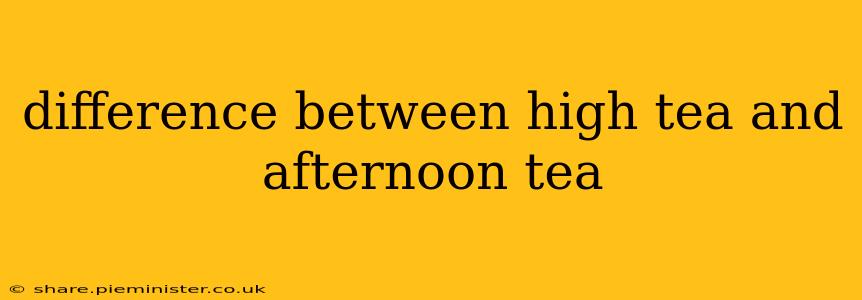The terms "high tea" and "afternoon tea" are often used interchangeably, leading to confusion. However, there's a subtle yet significant distinction between the two, rooted in their historical origins and the style of service. This article will delve into the differences, clarifying the nuances of these beloved British traditions.
What is Afternoon Tea?
Afternoon tea, the more elegant and refined of the two, emerged in the 1840s thanks to Anna, the 7th Duchess of Bedford. Feeling peckish between lunch and dinner, she requested a tray of tea, bread and butter, and cake be brought to her room. This simple act birthed a social custom that quickly spread amongst the upper classes.
Afternoon tea is characterized by its elegance and formality. It typically involves a tiered cake stand presenting delicate finger sandwiches, scones with clotted cream and jam, and a selection of pastries and petit fours. The emphasis is on dainty portions and a refined atmosphere. It's often served in formal settings, like hotel lounges or upscale tea rooms, and is considered a leisurely and sophisticated affair.
What is High Tea?
High tea, on the other hand, has a more working-class history. It originated in the 19th century as a substantial evening meal for families returning from work. Instead of being a dainty affair, it's a much more hearty and substantial meal, bridging the gap between dinner and supper.
High tea is served at a higher table (hence the name) and features a more robust menu. Think bread and butter, cold meats, cheeses, pies, and other savory items alongside tea. It's less about the delicate pastries and more about filling up on a substantial meal. The setting is typically less formal than afternoon tea.
What's the Key Difference?
The fundamental difference boils down to the formality, time of day, and the type of food served.
- Formality: Afternoon tea is formal and elegant, while high tea is more casual and practical.
- Time of Day: Afternoon tea is typically served between 3 pm and 5 pm, while high tea is typically served between 5 pm and 7 pm (or earlier, depending on the region and household).
- Food: Afternoon tea features delicate finger sandwiches, scones, pastries, and cakes, while high tea includes a more substantial meal with heartier dishes like cold meats, cheese, pies, and bread.
What about Cream Tea?
While not directly related to high tea or afternoon tea, Cream Tea often gets confused. It's a simpler version, generally consisting of scones, clotted cream, jam, and tea.
Is High Tea a Thing of the Past?
While high tea's origins are deeply rooted in the past, it's not extinct. Many establishments still offer a "high tea" experience, often featuring a blend of traditional afternoon tea elements and more substantial savory dishes.
What are the differences between Afternoon Tea and High Tea in terms of etiquette?
The etiquette surrounding afternoon tea is more formal. You'll find stricter guidelines on how to handle the cutlery and the order in which to consume the food. High tea, on the other hand, has less rigid etiquette, reflecting its more casual nature.
In conclusion, while both high tea and afternoon tea involve tea, the experience, the food, and the occasion differ substantially. Understanding these differences allows you to better appreciate the nuances of each tradition and select the experience most suited to your preference.
